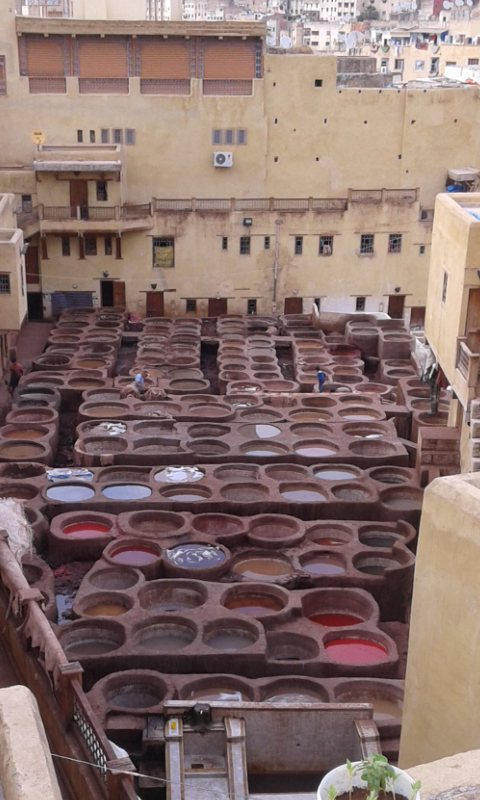
The city of Fez, considered the scientific capital of the Kingdom of Morocco, is known for its traditional craftsmanship for many centuries. It was a profession for earning a living and an attempt to prevent the extinction of ancestral crafts, one of the most traditional crafts in the kingdom.
Fes, Morocco - The city of Fez, the scientific capital of the Kingdom of Morocco, is known for its traditional craftsmanship for many centuries. For them, it was a profession to earn a living and an attempt to prevent the extinction of ancestral craft, It is a leather tanning craft.
Two centuries ago, Fès had the largest number of tanning houses in Morocco, while the number was smaller in other cities like Kassala and Marrakech. These places were home to thousands of tanning people who bought cattle skins to make them recyclable, Purely natural, used before this era by the Greeks and Romans, and the Fascists kept them.
Among the dozens of tanning houses, few have been able to maintain its continuity, and today, in addition to being the main place for leather tanning in a traditional way, is one of the most important tourist attractions for Moroccan visitors, whether Moroccan or foreign.
The most famous of these are Dar al-Dabbagh "Shuwara". Mohsen, one of the young tanning workers, said: "The tanners choose the leather and put it in the mackerel for 10 days to be saturated with dyeing, after it is purified and washed well using lime and toilet waste. The "Jafna" to be taped, "a process that requires strength and length because of the lengthy movement it takes to fill the skin with colored materials."
"Colors that are dyed with leather are mainly extracted from pomegranate, saffron and other natural materials," Mohsen told CNN in Arabic. "The workers then dry them by leaving them in high places," said the 20-year-old who has been a tanning expert since his transfer from his father, who retired because of his age and deteriorating health. He said they were preparing leather from the wool To paint and direct them to sell to bazaar owners who are working on the re-manufacturing.
The house of the bear bears the role of another tanning, and the visitor thinks that it is in the middle of a festival of colors. On the tiled surfaces there are traditional bazaars selling all the leather, jackets, bags, shoes and buttons that were once hotels and residences. Despite the unpleasant smells resulting from the process of the skin industry, which is used by manufacturers and shop owners, but the beauty of the tannery and colors of the net and traditional design old forget the visitor how strong smell.
In the Fez, when we say Dar al-Dabbag, the Fascists are referring to the House of Dabbagh directly, because it is the oldest and most famous month known for visitors from inside and outside the countr
good job @network2017
thank you so much, plaise vote all my blog if you can becouse l'm a new member and i need help from all person to get the first power👍👍
Of course @network2017
thanks
Thank you for sharing,here is my new blog https://steemit.com/photograph/@ndapewa/the-most-beatiful-girl-in-the-world
Posted using Partiko Android
done
Thank you so much
Posted using Partiko Android